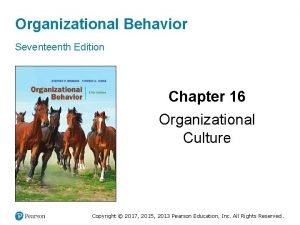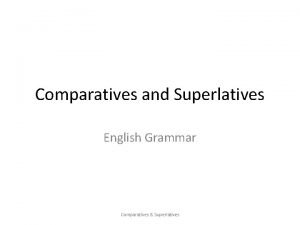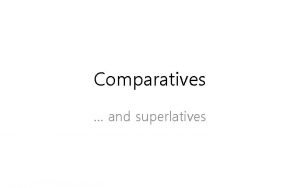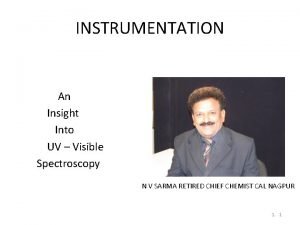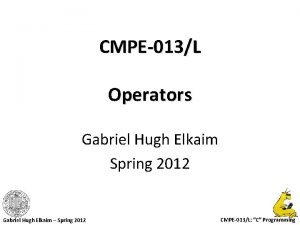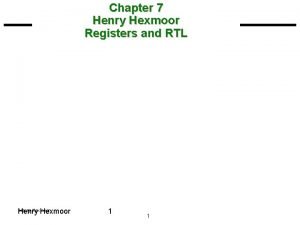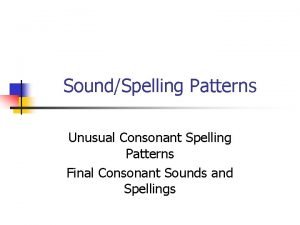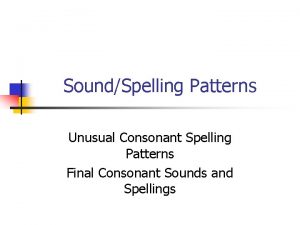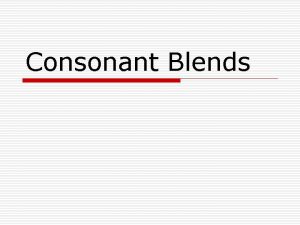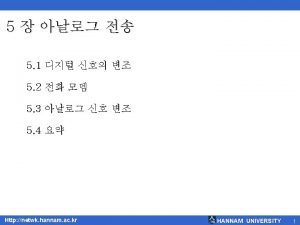Germanic Languages Germanic Cultures The First Consonant Shift











- Slides: 11

Germanic Languages Germanic Cultures

The First Consonant Shift • Grimm’s Law, formulated by Jacob Grimm in 1822, describes the differences in consonants between Germanic and other Indo-European languages. • Describes the different inventories of stop consonants in the languages. • Grimm observed regular correspondences among Indo-European Languages


Describing the Difference • Grimm (and Rasmus Rask) observed patterns of consonants – – Skt. pitár Lat. pater Gk. patē r Go. Faðar mātár māter mā tēr ON mōðir • Where one sees /p/ in other IE families, one finds /f/ in Germanic languages; where one finds /t/ one finds /θ/, or its allophones • Demonstration of change. • Grimm’s Fairy Tale.

Verner’s Revision • Grimm’s Law has exceptions, where it just doesn’t work out right. • Karl Verner, 1877, observed exceptions happened at the onset of the second syllable, so the consonant was intervocalic. – Also noticed aberrations with /s/. • OE wæs ‘he was’; wæron ‘they were’ • Verner reasoned it had to do with syllable stress.

Germanic Stress Pattern • Germanic languages have initial stress-stress on the first syllable. • Most other Indo-European language have stress on secondary syllables. • Germanic’s initial stress pattern wasn’t firmly established until after Gothic (post 400 AD).

Verner’s Law Illustrated • Latin caput should have Grimm’s outcome hafod as its cognate in all Germanic languages. In Gothic, haubiþ. • In some cases, what should be /s/ appears as /r/; hence, English was/were. • When intervocalic but followed by an unaccented syllable, /s/ becomes /z/, when preceded by an accented syllable, /r/.

Proto-Indo-European Grammar • PIE was a fully inflectional language, using a complex system of cases. • Nouns had three genders: masculine, feminine, neuter. • Verbs used three numbers, singular, dual, and plural. • Verbs used aspect (a verbal quality focusing on completion, duration, or repetition). • Verbs had three voices: active, passive, middle. • Verbs had five moods: indicative, subjunctive, optative, imperative, injunctive.

Germanic Inflections • Four true cases: nominative, genitive, dative, accusative. • Three genders: masculine, feminine, neuter. • Three persons: first, second, third. • Three numbers: singular, dual, plural. • Three moods: indicative, subjunctive, imperative. • Active voice only. • Two tenses formed from the aspectual system: present, past.

Consequences of Consolidation • Suppletion: combination of multiple verbs with paradigms representing singular aspects into a full paradigm: ‘to be’. • Periphrastic constructions: reliance on single voice created need for complex grammatical constructions. • Analogy: loss of cases resulted in less correspondence between case and inflection.

Germanic Culture • Complex shared mythology among Germanic tribes. • Mass migrations beginning c. 400 AD. • Gothic bible. In Uppsala. Database • Gothic Lord’s Prayer • Artifacts from British Museum • Old English Pages; Comp. Lord’s Prayer
 Organizational cultures often reflect ________.
Organizational cultures often reflect ________. Superlative the worst
Superlative the worst Superlative adjective colorful
Superlative adjective colorful School of languages cultures and societies
School of languages cultures and societies Red shift and blue shift
Red shift and blue shift Aniline uv spectrum
Aniline uv spectrum Cap 221
Cap 221 Bathochromic shift and hypsochromic shift
Bathochromic shift and hypsochromic shift Difference between arithmetic shift and logical shift
Difference between arithmetic shift and logical shift Logical shift and arithmetic shift
Logical shift and arithmetic shift Difference between arithmetic shift and logical shift
Difference between arithmetic shift and logical shift Difference between arithmetic shift and logical shift
Difference between arithmetic shift and logical shift
